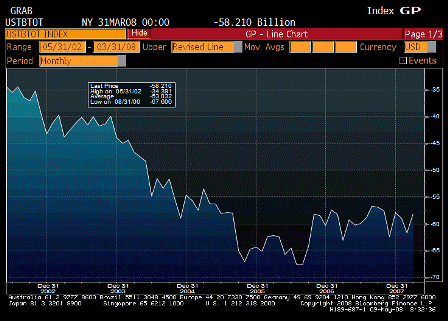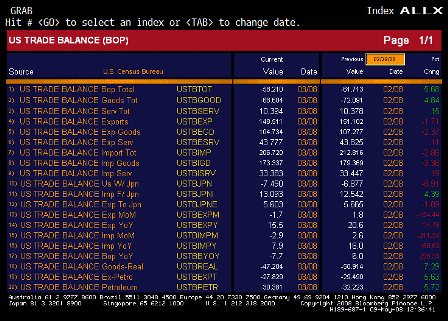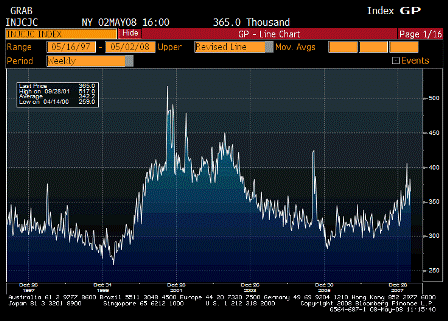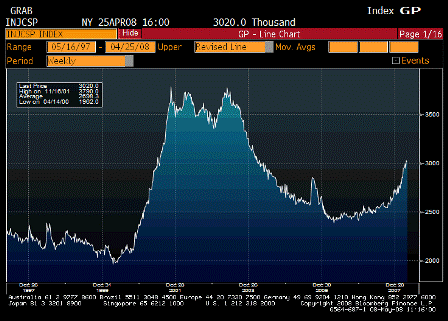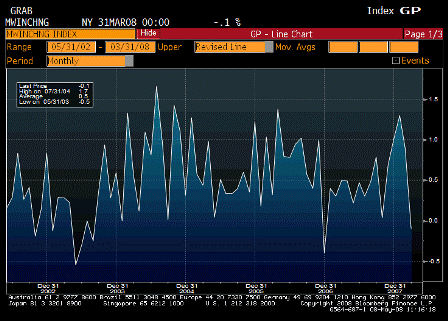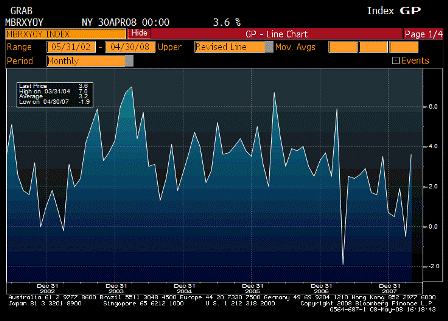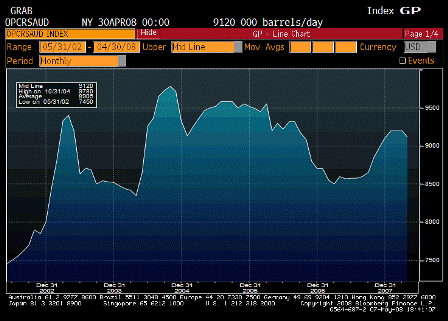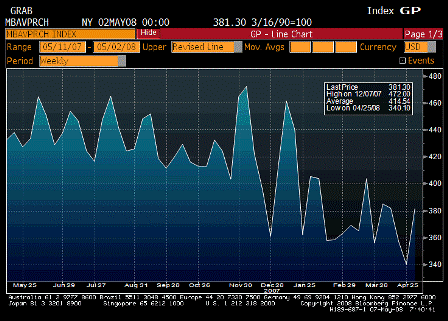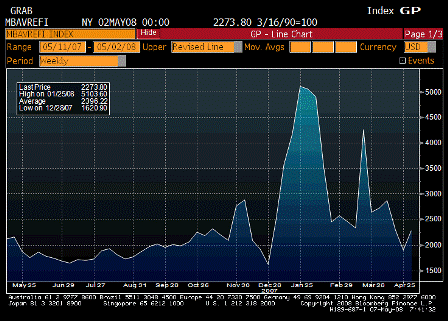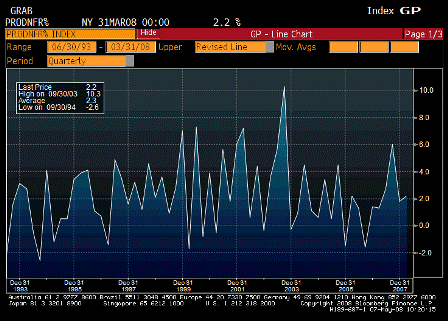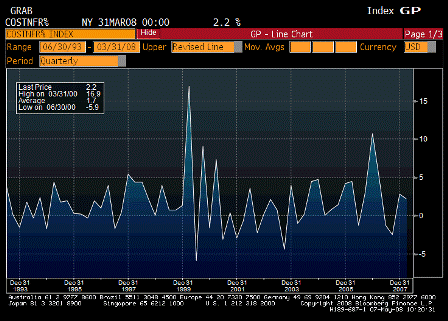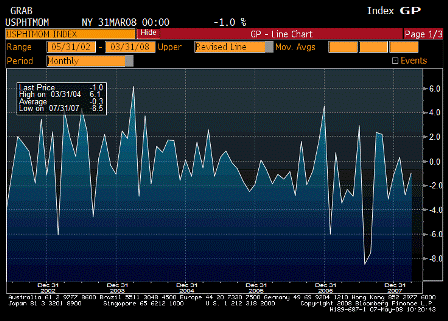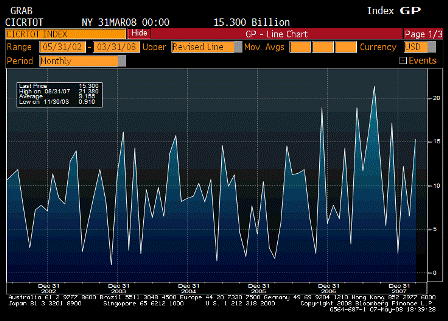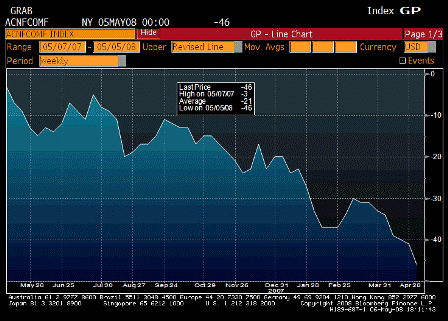Report by Andrew at UBS LIMITED
China – You will have seen in the FT that China plans to encourage its agricultural industry to start buying up land in Africa and Latin America to grow crops on for the Chinese market.
Last year the Chinese National Development & Reform Commission said that China will import the equivalent of 6% of the U.S. corn harvest by 2010. That works out at 38% of U.S. exports or 25% of world exports. A week or two back the Chinese Academy of Social Sciences said that China now has a shortfall of agricultural land equivalent to 17% of what it needs to support its population. Yesterday the Ministry of Agriculture said it is becoming increasingly difficult to sustain self-sufficiency.
This is why global grain prices are soaring, and are going to continue soaring. It is due to top soil mining and water depletion in China, and they are now clearly starting to call on the rest of the world to do the same.
Putting aside the strain this will have on the rest of the world’s land, it also does two other things. Grains have 2 real inputs. Energy (fertilizers) and water. So by importing grains, it is importing embedded energy and embedded water, and on a HUGE scale.
China is running out of water and is going through peak coal production, but rather than buying the energy on the open market and then desalinating the water it needs – (it would require 3% of world oil production to desalinate the scale of water needed just to stand still) – it is going to buy this in an embedded form. It does make some sense in that China has depleted its land so aggressively – (it has lost about 75% of its top soil in the last 30 years, and is consuming way beyond sustainable levels of water) that it will take less energy to produce grains in other parts of the world than in China, BUT that means paying world prices for the energy rather than with Chinese subsidized fertilizer and water prices. Food prices are going to soar. The terms of trade are going to continue to move against China.
You will have seen today that Thailand is warning that its rice yield could fall by 75% by year end. To meet global needs, it is doing a 3 crop harvest this year. That means the land is getting no respite, and the paddy fields are exhausting its water resources. The head of the government’s rice department has warned that this could seriously damage yields for many years, losing it the position as the world’s largest rice exporter. Rice is a very nitrogen dependent crop. That is why it is grown in paddy fields as the water stops nitrogen loss from the soil, and nitrogen rich algae grow on the stagnant water to form a living fertilizer. With the water depleting, Thailand is having to turn to buying nitrogen based fertilizers (natural gas is the cheapest way of making this), adding to the global call on energy.
Quite frankly, food and energy prices are only going one way until Chinese demand is priced out of the market. The problem is that China’s lands and water are so destroyed now, that it is going to become increasingly impossible for it to maintain existing production. Talk of bringing more land in the old Soviet Union or Africa under production seems wishful thinking. If you recall the Soviet Union destroyed its own land in the 1960’s under the various 5 year plans which caused it to import 25% of the U.S. grain harvest in the 1970’s causing the food price rises then. African land quality is also generally poor – (Northern African soils destroyed by the Roman Empire’s over exploitation, and then in recent years the use of fertilizers managed to lift agricultural yields heavily, but the land has deteriorated at the same time), and Africa, like Eastern Europe (and in fact every continent other than North America is a net grain importer. Food and energy price inflation is not a temporary issue, prices are going higher.
Dave from AVM comments on the article:
Good piece, highlights a few more things we have been talking about for a few months:
- Farming inputs ARE energy and water, energy for fertilizer (NG) and also diesel/kero for farm equipment (together something like 50+% of US farmer’s COGS)
- Diesel also a call on NG, as “cleaning” fuel (lowering sulfur content) requires hydrogen which is usually a byproduct of active gasoline refining (not this year, yet). In the absence of an increase in refinery utilization rates, hydrogen will be increasingly cracked with natural gas (which is still cheap fuel versus petroleum on a molecular basis)
- China also importing more LNG on long term contract basis, putting pressure on domestic US natural gas prices (we have to compete for LNG cargos (spot) when there are domestic NG shortages [we have a 300bcf deficit today to last year’s levels, before summer cooling demand begins in earnest])
- Coal issues mentioned are true, but coal still difficult to trade effectively. Better expressed in regional power markets.
- Abandoning ethanol mandates now (as opposed to Nov EPA vote) to have little impact on ethanol/implied corn demand with crude 120+
We think grains and natural gas prices to rise jointly over next 6 months by 20%+. Power to follow but with extremely high volatility in the summer months, and large positive skew in the shoulders (june and sep).
If food’s as tight as indicated below, world tensions will get a lot worse than anyone currently imagines, including large regional wars.
Eliminating biofuels could buy a few years, cutting national speed limits a few more and perhaps even stabilize things for the next 25 years.
[top]

